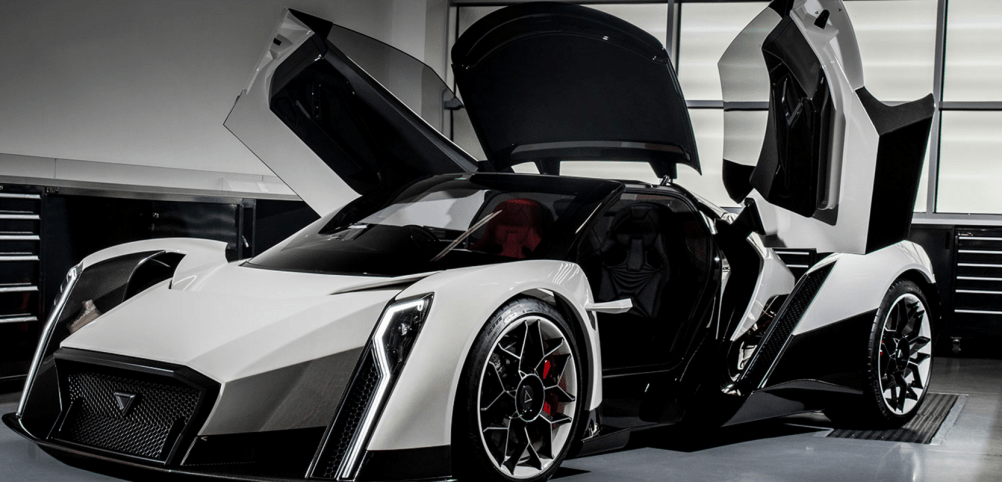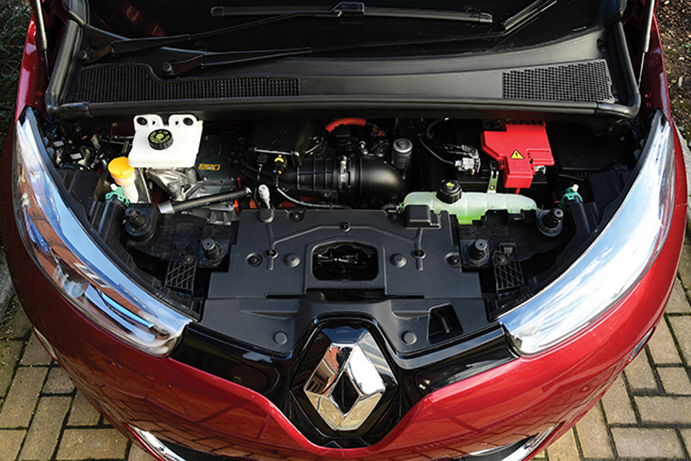Peter Rolton, chairman of engineering consultancy Rolton Group, explores the evolving electric vehicle landscape and the challenges that lie on the road ahead.
It’s no secret that electric vehicles are set to be the next game changer in the automotive sector. EVs are now an everyday reality on our roads, and innovations in this fast-moving sector are constantly hitting the headlines; take for example charging provider PODPoint's latest £9m investment programme, or the announcements of all-electric hypercars at the Geneva Motor Show.

The Dendrobium all-electric hypercar
But electric vehicles are more than just the latest automotive evolution. Their rapid emergence from concept into the world of everyday transport has far-reaching implications, particularly in the areas of environmental impact and changes in our energy production and consumption.
Funding for research into electric vehicles was given a boost in the recent budget, with chancellor Philip Hammond confirming £270 million of funding to go towards helping the UK lead the world ‘in the development, design and manufacture of batteries that will power the next generation of electric vehicles, helping to tackle air pollution.’ This is a welcome step towards improving battery charging and storage capacity, key measures required to address current widespread ‘range anxiety’ concerning electric vehicles.
Whilst such investment is important, one of the biggest drivers of the rapid development of electric vehicles still comes from legislation. The continued pressure placed on automotive manufacturers through various legislative measures is designed to achieve lower emissions from vehicles. As it becomes more and more difficult to reduce emissions from petrol and diesel powered vehicles, EVS naturally offer an effective way for car makers to lower the average CO2 emissions of their products.

Under the bonnet of the Renault Zoe
It is perhaps surprising, therefore, that the diesel scrappage scheme announcement expected by the chancellor was not included in the spring budget, although he did fire a warning shot to diesel drivers, with the suggestion that a new tax regime could be introduced before the end of the year. Whilst the core aim of such measures would be to reduce pollution, a cashback or incentive to buy a low-emission vehicle could well result in a rapid increase in consumer demand for electric vehicles. While we’re awaiting the next government announcement, several local authorities have already begun to try to discourage people from driving diesel cars with higher parking charges for diesels in city centres, another incentive for some commuters to review the offering of an electric vehicle.
Of course, the car makers themselves are playing a significant role in driving demand for the new generation of electric vehicles. The ability of manufacturers to develop vehicles that are desirable, affordable and have sufficient range capabilities, is a significant factor in uptake – essentially the automotive manufacturers, spurred on by increasingly demanding legislation, are designing more attractive and practical cars. Moreover, elite and recognised global brands are increasingly enticing early-adopters, changing consumer opinions and boosting demand still further.
In this ever-evolving landscape, there’s no doubt that the appeal of electric vehicles is increasing. It’s predicted that by 2050 EVs will have utterly saturated the passenger vehicle fleet; an area which accounts for 69 per cent of all vehicles on UK roads. However, this shift in how we all get around in future is set to provide a real challenge for our already struggling national grid. When you think of just how much energy will be needed to power the majority of vehicles on our roads, the mainstream shift from fuel tanks to batteries will be a colossal ask of our ageing infrastructure. The energy demands once catered for by burning a truly enormous quantity of petrol and diesel will instead be taken as electricity from the grid – a hell of a change in capacity and load profile demands.

While the grid as a whole theoretically has the capacity to accommodate EV charging in the short term, higher uptake in certain areas, combined with lack of infrastructure investment, has the potential to create imminent and significant local level challenges. Our old grid is constantly being stretched to its limits, expected to do more and more as the consumer demand for power shows no signs of abating. Improvements and investment are desperately needed.
The announcements in this year's Spring Budget do show the government’s determination to invest in the future of electric vehicles and to ensure the UK remains at the forefront of innovative technology, whether that be electric vehicles or battery charging. But it must be recognised that this is not purely an automotive sector issue, affecting just the car manufacturers and battery and charging point developers. With changing consumer preferences in this arena and the anticipated shift to the majority of people relying on fully electric vehicles over the next couple of decades, there will be an enormous impact in every industry sector. If we’re to realise the dream of an electric vehicle future, we must take a more holistic view of our evolving energy requirements and act now to develop a robust infrastructure to meet our future needs.





April 1886: the Brunkebergs tunnel
First ever example of a ground source heat pump?